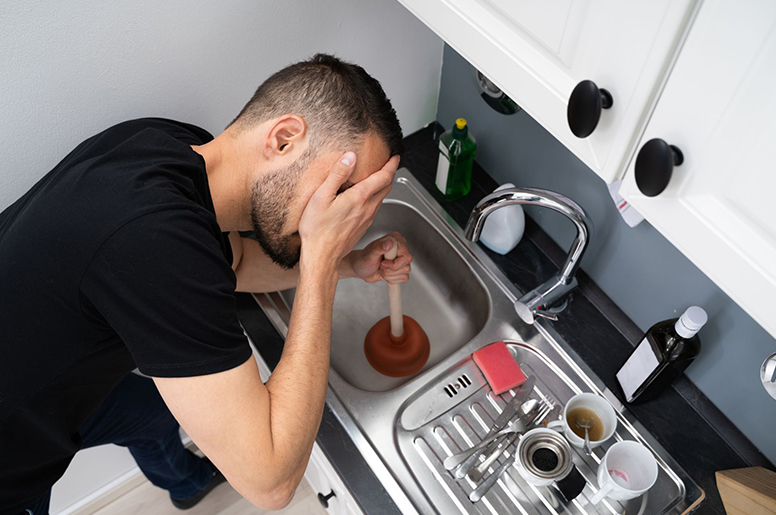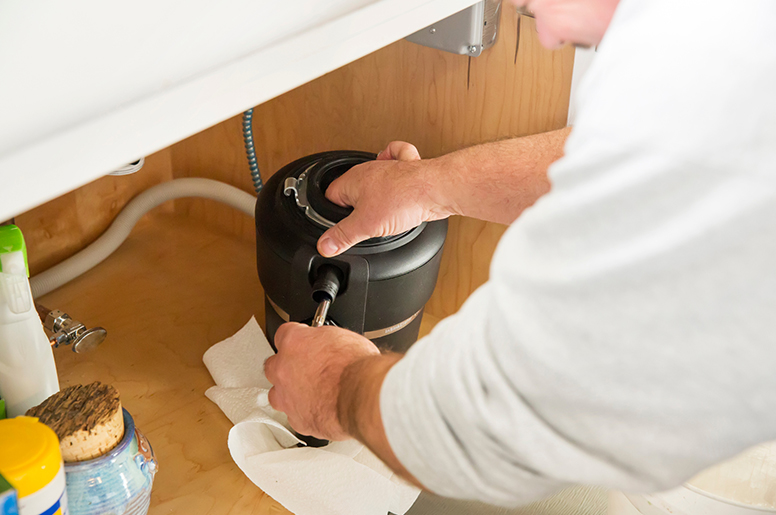Find A Plumber Near You
Call Us Now:

A clogged garburator can turn a simple kitchen task into a frustrating ordeal, leaving you with a sink full of water and nowhere for your food scraps to go. As many Ontario homeowners have discovered, these handy kitchen appliances, while efficient, are not immune to blockages and other issues. Whether it’s from overloading or improper items being disposed of, a clogged garburator can disrupt your daily routine and lead to unpleasant smells and potential plumbing disasters.
If you’re looking for quick and effective solutions for how to fix a clogged garburator, you’re in the right place! We’ll guide you through some basic troubleshooting steps and maintenance tips to help you address minor clogs yourself. However, for more stubborn or recurrent issues, the expertise of a professional plumber is invaluable. Not only can they effectively resolve the problem, but they can also provide insights and advice to prevent future issues.
Keep scrolling to learn why your garburator is clogged and how to fix it.
Do you pay attention to what goes into your garburator? Frequent garbage disposal clogs happen for these reasons:
Turn off the garburator by unplugging it from its source or switching it off from your home circuit breaker. Test the power of the garbage disposal unit by turning it off and on as a safety measure to prevent injuries.
Remove the safety guard from the drain hole and use a flashlight to see why the garbage disposal is clogged. Use a pair of tongs or pliers to remove the stuck food waste until there’s nothing left.
Never use your fingers to scoop out food particles or loose items! It’s extremely dangerous even if you’ve turned off the garburator.
The base of most garbage disposals has a manual crank socket connected to the rotator blades. Insert an Allen wrench or hex key into the socket slot then twist it back and forth to loosen the blades.
Once you’ve removed the debris inside the sink drain and freed the rotator blades, press the reset button. Turn its power back on and test if it’s still clogged.

Image source: Canva
If after running the garbage disposal there’s still standing water, turn off the device and get the sink plunger or drain auger.
Fill the sink with cold water, then cover the drain disposal opening with the plunger. Push down and release it rapidly and repeatedly to loosen the clog and build water pressure. If you’re using a drain auger or snake, ensure that the hook is inserted fully into the drain line before twisting its handle to catch debris.
At this point, lingering food debris from the drain may back up into the sink. Take this as a sign to stop plunging and check if you unclogged the garburator successfully. Remove any food scraps from the sink, then run the water. If it doesn’t go down, move on to the next step.
Grab your baking soda and vinegar, then measure out a quarter-cup and half-cup of each, respectively. Pour the baking soda into the drain first and follow it with the vinegar. Wait at least 20 minutes for the natural unclogging solution to break down food scraps before you flush the drain with hot water.
→ Read more: Why You Shouldn’t Use Chemical Drain Cleaners
If the garburator is still clogged after doing all these steps, it’s time to call a professional plumber. They can offer more advanced solutions, such as cleaning the drain pipe, to ensure you won’t have a clogged garbage disposal in the future.
Being proactive is the best way to avoid a clogged garburator. Follow these measures for future prevention:
✓ Stick a list of things you should and should not throw in the garbage disposal somewhere visible for everyone to see.
✓ Always run cold water when using the garbage disposal.
✓ Practice running small batches of food waste at a time.
✓ Meal plan appropriately to lessen food waste that would otherwise be put in the garburator.
✓ Don’t let the garburator sit idly as it can cause rusting. Instead, run the device occasionally to keep its parts active.
✓ Keep the garbage disposal clean with regular monthly maintenance.

Image source: Canva
Let’s face it—a clogged garbage disposal can happen at any time and you need to be prepared for it. Learning how to fix a clogged garburator can be done, but you should also have a backup plan in case the problem is worse off than you thought.
Is your garburator clogged? We’re here to fix it. 1st Rooter is your reliable Ontario plumber servicing property owners in Hamilton, Oakville, and Burlington. We’re ready to help 24/7/365, so you won’t ever have to worry about clogged garbage disposals, busted pipes, and sewer backups at home.
Send us a work request and we’ll be there!
Leave A Reply